Climate change: Natural and Anthropogenic causes
Posted on June 7, 2020 by Yonature

Climate change is today’s number one culprit for extreme weather events, melting glaciers, fragmenting permafrost and sea-level rise. The IPCC declares that there is now indisputable scientific evidence that the climate system is warming up. As this continues in the coming decades, millions of lives are at risk as well as the world’s financial system.
Climate change definition
Though people use the terms climate change and global warming interchangeably, they are not the same. On the one hand, global warming is the long term heating of the Earth’s climate system. On the other hand, climate change is the long term change in the Earth’s weather patterns.
Scientific definition of climate change
Scientifically, the IPCC defines climate change as
“a change in the state of the climate that can be identified (e.g., by using statistical tests) by changes in the mean and/or the variability of its properties, and that persists for an extended period, typically decades or longer”.
Climate change may be due to natural internal processes or external forcings. It includes modulations of the solar cycles, volcanic eruptions and persistent anthropogenic changes in the composition of the atmosphere or in land use.
Interestingly, the UNFCCC, in its Article 1, defines climate change as:
‘a change of climate which is attributed directly or indirectly to human activity that alters the composition of the global atmosphere and which is in addition to natural climate variability observed over comparable time periods’.
The UNFCCC thus distinguishes between climate change that human activities cause. And climate variability that occurs due to natural reasons.
Natural causes of climate change
Throughout the history of the Earth, there have been many episodes of changing climates. Ice ages and warm periods have occurred in the past as a result of natural phenomena. Basically, the natural causes of climate change are changes in the Earth’s orbit, solar variations, volcanic eruptions, ocean currents and internal climate variability.
1. Changes in the Earth’s orbit
Small shifts in the Earth’s orbit around the Sun can trigger important changes in the climate system. While these climate fluctuations normally take thousands of years to manifest themselves, they represent significant changes in the strength of seasons on Earth.
Milankovitch’s Theory
The Milankovitch Theory explains that there are 3 cyclical changes in the Earth’s orbit and tilt:
- Eccentricity: changes in the Earth’s orbit every 100,000 years,
- Obliquity: changes in the tilt of the Earth’s axis every 41,000 years and
- Precession: swaying in the Earth’s axis every 23,000 years.
Ice ages on Earth
Subsequently, the interaction of these different cycles affects the amount of sunlight that reaches the Earth thus controlling glacial and interglacial periods. As it is, the last ice age on Earth ended some 12,000 years ago. Right now, we are in an interglacial period called the Holocene. The next cooling period may start in some 30,000 years.
2. Solar variations
Our main source of energy on Earth comes from the Sun. As it is, the amount of heat energy radiating from the Sun also varies from time to time thus affecting the climate system of Earth.
In fact, every 11 years, the solar cycle changes due to sunspots. Sunspots develop as a result of the weakening of the magnetic field that transports heat from the inside of the Sun. Though the energy emitted by the Sun varies only by 1.3 W/m2, more sunspots lead to a warmer global climate and fewer sunspots to a cooler climate.
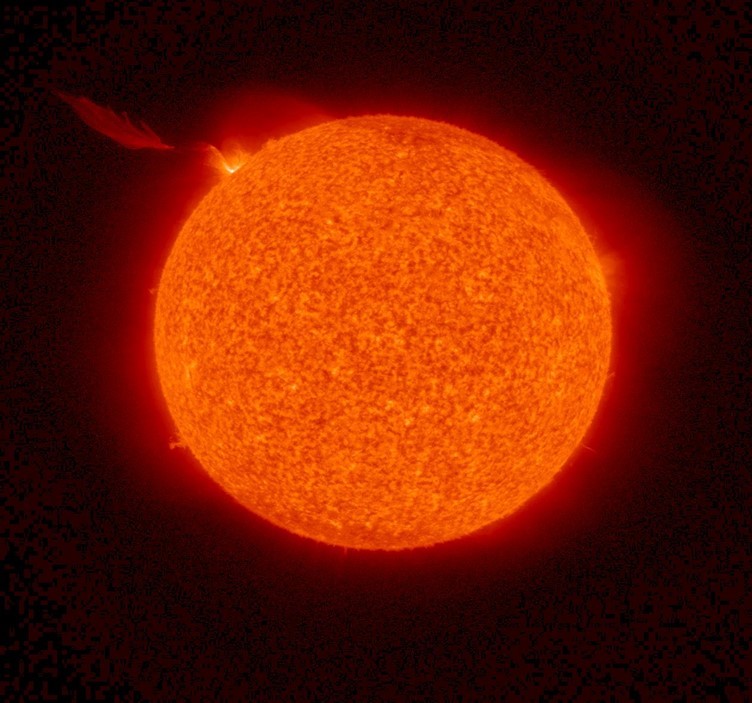
3. Volcanic eruptions can lead to climate change
Volcanic eruptions can cause short term (few months to few years) cooling of the Earth’s climate. When volcanoes erupt, they spit out volcanic ash, dust, aerosols, sulphur dioxide and carbon dioxide. Volcanic ash and dust can hang in the air for a few months and block sunlight from reaching the Earth. This can consequently trigger a cooling effect on the climate system.
Sulphate aerosols
Additionally, sulphur dioxide can combine with water vapour in the atmosphere to form sulphate aerosols. These aerosols too block out the sun’s rays. Also, as they are lighter than dust particles, they stay in the atmosphere for a longer time.
Mount Tambora caused the Earth’s climate to change
Though volcanoes also liberate carbon dioxide, the cooling effect is stronger than the warming potential of carbon dioxide. As an example, Indonesia’s Mount Tambora eruption in 1815 remains perhaps one of the most catastrophic eruptions in historic time [1]. This volcano ejected some 60 Tg of sulphur dioxide into the atmosphere which converted into sulphate aerosol. This increased the planet’s albedo leading to a cooling of the Earth’s climate for some years thereafter.
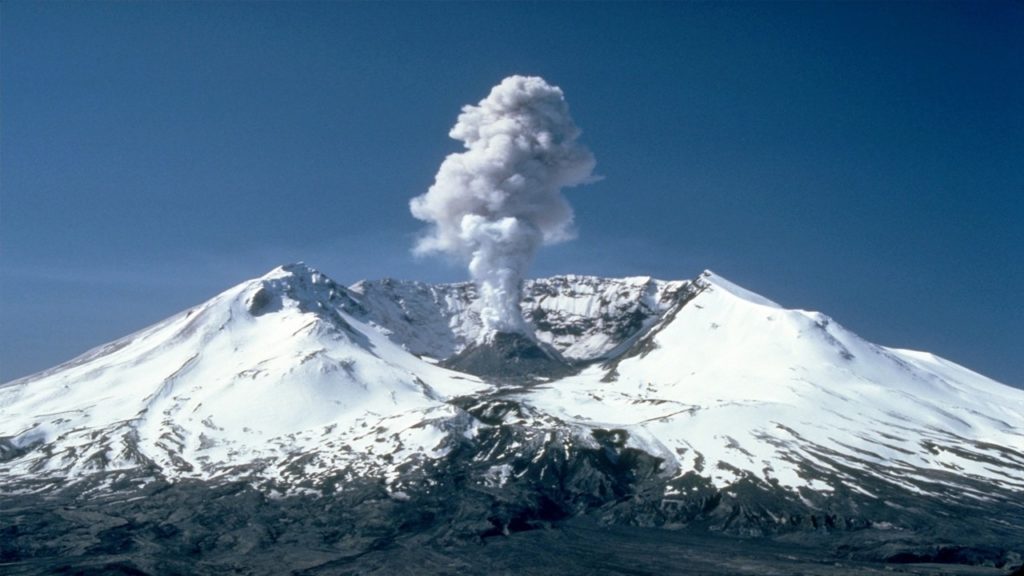
Image by WikiImages from Pixabay
4. Ocean currents
Global conveyor belt
The global conveyor belt is an ocean current system that transports water around the world. It includes both surface and deep water currents that circulate across the world’s oceans in a 1,000-year cycle. The global conveyor belt is driven by water density differences, winds, solar energy, tides, topography of ocean basins and shape, nearby landmasses and the Earth’s rotation.
Movement of the global conveyor belt
The nucleus of the global conveyor belt starts in the North Atlantic Ocean and adjacent basins thus producing the dense water of the North Atlantic Deep Water (NADW). This water moves towards the Antarctic Ocean and blends with the chilly, very dense water in the region. It continues its way towards the Indian and Pacific oceans where it mixes with warm water.
Consequently, the water moves to the ocean surface and makes its way back to the North Atlantic Ocean [2]. The global conveyor belt plays a key role in transporting heat around the world thus maintaining a stable climate system.
5. Internal climate variability
ENSO/La Nina events
In addition to that, some internal oceanic variabilities can affect the climate system of the Earth.
For instance, El Nino-Southern Oscillation (ENSO) events are recurring climate patterns that occur every five years. ENSO occurs due to the oceanic-atmospheric interaction in the tropical Pacific Ocean resulting in slightly different sea surface temperature. El Nino and La Nina are opposite cycles of the ENSO cycle. While El Nino increases global temperature, La Nina reduces it.
Arctic Oscillation
Additionally, the Arctic Oscillation (AO) is another climate pattern driven by winds that circulate counterclockwise in the northern hemisphere around the Arctic. It has a significant impact on the weather and climate in North America, Europe and Asia.
Human caused climate change
Natural greenhouse effect
The main way through which humans contribute to climate change is by releasing excessive greenhouse gases. In fact, greenhouse gases naturally exist in the atmosphere and help to maintain a steady temperature on Earth by trapping heat energy that radiates from it. Had it not been for this greenhouse effect, the Earth’s temperature would have dropped to -21° [3]!
Greenhouse gases in Earth’s atmosphere
The greenhouse gases that exist in the Earth’s atmosphere are water vapour, carbon dioxide, methane, nitrous oxide and ozone. When the amount of these greenhouse gases becomes too much, more heat is retained on the planet. This thus results in global warming.
Human-caused global warming
In general, we estimate that the global temperature has risen by 1°C since the pre-industrial period (1850-1900). This increase in temperature is believed to be linked to massive human activities that started since the industrial revolution in the 1950s. The level of carbon dioxide in the Earth’s atmosphere today by far exceeds past levels. Thus, as global temperature increases, it also causes a shift in the climate system.
In this respect, human induced causes of climate change include the burning of fossil fuels, agriculture and land use changes.
1. Burning of fossil fuels
The majority of the greenhouse gas, carbon dioxide, that is found in the atmosphere today comes from the burning of fossil fuels. People use fossil fuels to drive vehicles like cars and aeroplanes, to generate electricity and manufacture materials.
For the past thousands of years, the amount of carbon dioxide in the air was more or less stable. However, since the industrial period, its level rose sharply through various human activities.
Urbanization
Urbanization also relies heavily on the use of fossil fuels. Cities only emit more than 60% of greenhouse gases. What happens is that urban areas cater to more residential needs like heating/cooling houses and wastewater management. At the same time, urban populations consume more goods and services. All these needs lead to the emission of huge amounts of greenhouse gases.
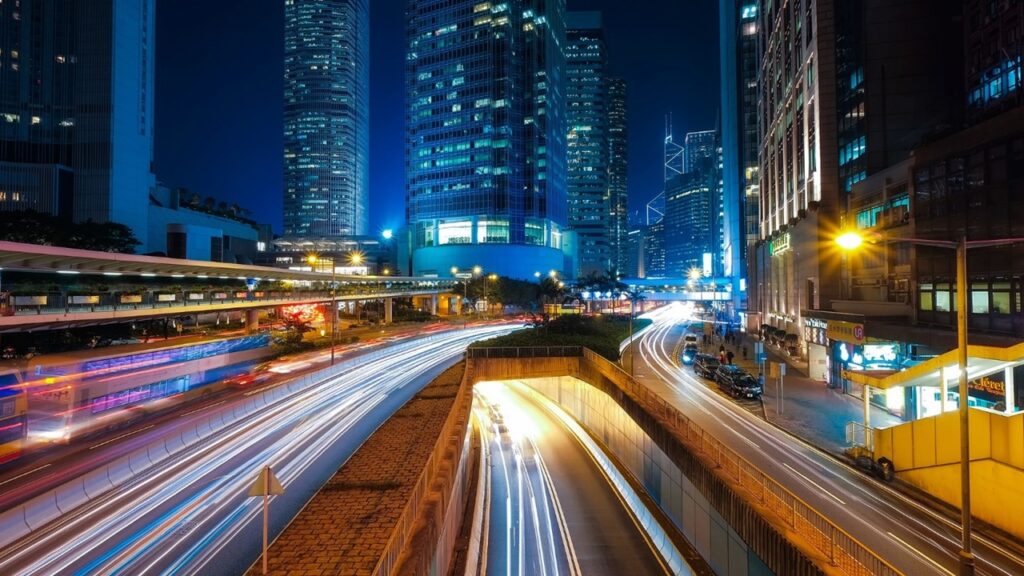
2. Agriculture
As the number of people increases on the planet, food production must match the needs of nations. So, when people produce more food, various agricultural processes release more greenhouse gases. This includes vehicular transportation, food production and storage activities.
Methane from cattle digestion
Nonetheless, methane is the most dangerous greenhouse gas that comes from the agricultural sector. Livestock like cattle emits it during their digestive processes. Thus, large meat farms contribute significantly to climate change as methane stays in the atmosphere for long periods of time.
Nitrous oxide from fertilizer use
Also, besides methane, nitrous oxide is another potent greenhouse gas that emanates from agricultural activities. It comes from the breakdown of fertilizer products, soil management, tillage and irrigation methods. Since the Green Revolution of the 1960s, the use of fertilizer rose sharply. Both the amount of manure produced by animals and applied to fields, sometimes excessively, shot up.
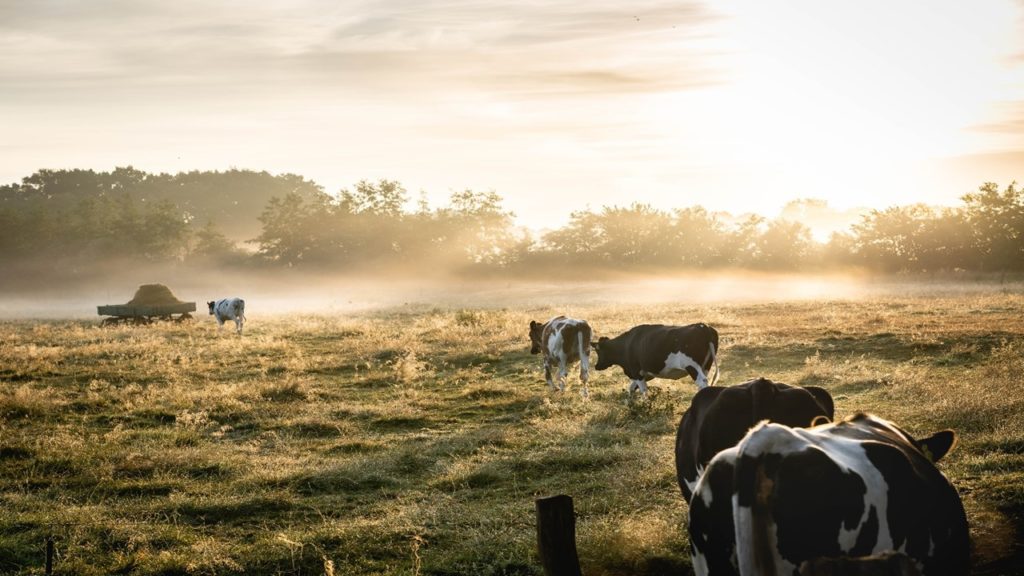
Photo by Lukas Hartmann form PxHere
3. Land-use changes
Land-use changes, referring to activities that humans undertake to manage or convert land types, also play an important role in climate change. The IPCC reports that during the 1990s, deforestation in the tropics and forest re-growth in temperature zones were the major factors contributing to greenhouse gas emission and removal respectively.
Deforestation
As it is, forests are major carbon sinks and deforestation therefore heavily impacts on carbon capture. Naturally, trees and plants absorb carbon dioxide and help to decrease its amount in the atmosphere. When forests are cleared for human purposes such as farms and settlement, more carbon dioxide remains in the air. Likewise, harvesting and burning trees also release back the carbon stored in trees to the atmosphere.
Carbon stored in forests
As a matter of fact, forests store 283 Gt of carbon as biomass, 38Gt in deadwood and 317 Gt in soils and accumulated litter. Other terrestrial systems like grasslands and croplands also store large amounts of carbon in their soil and organic matter. Thus when humans upset the carbon sequestration capacity of the land, that carbon finds its way into the atmosphere.
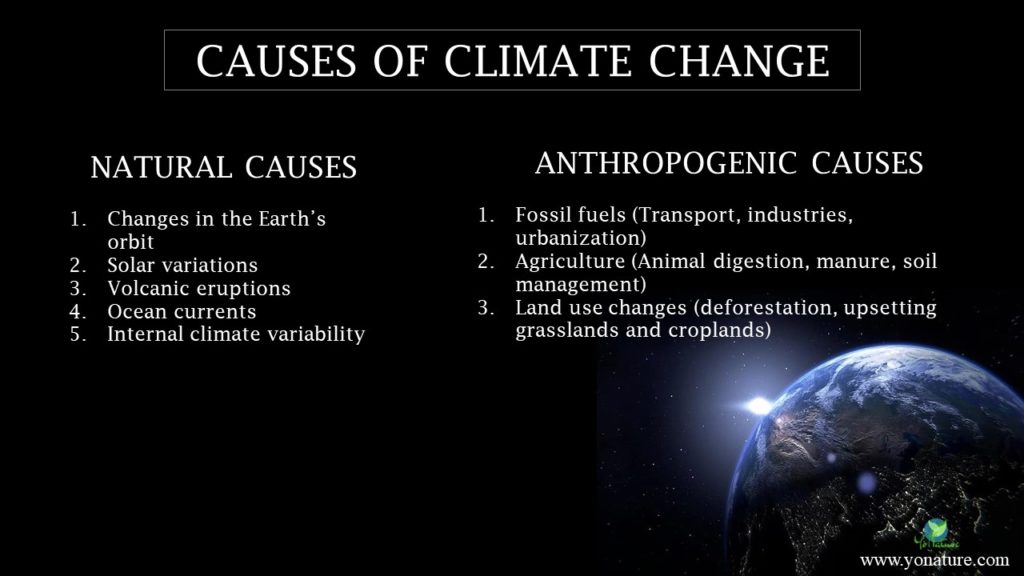
References
- Fasullo, J.T., Tomas, R., Stevenson, S., Otto-Bliesner, B., Brady, E. and Wahl, E., 2017. The amplifying influence of increased ocean stratification on a future year without a summer. Nature communications, 8(1), pp.1-10. https://doi.org/10.1016/0377-0273(86)90079-X
- Iudicone, D., Speich, S., Madec, G. and Blanke, B., 2008. The global conveyor belt from a Southern Ocean perspective. Journal of Physical Oceanography, 38(7), pp.1401-1425.
- Anderson, T.R., Hawkins, E. and Jones, P.D., 2016. CO2, the greenhouse effect and global warming: from the pioneering work of Arrhenius and Callendar to today’s Earth System Models. Endeavour, 40(3), pp.178-187.
- IPCC. (2007). “The physical science basis”. [online] Available from https://www.ipcc.ch/report/ar4/syr/ [Accessed 22/03/2020]
Category: Science Tags: agriculture and climate change, anthropogenic causes of climate change, causes of climate change, Climate change, climate change diagram, climate change facts, ENSO cycles climate change, how changes in the earth’s orbit cause climate change, how humans cause climate change, how nitrous oxide in agriculture causes climate change, human induced causes of climate change, is climate change real, list of causes of climate change, Milankovitch Theory and climate change, natural causes of climate change, urbanization and climate change
15 Comments on “Climate change: Natural and Anthropogenic causes”
Leave a Reply Cancel reply
Get News by Email!
Categories
Search
Find Us
contact[at]yonature[dot]com
Site Links
Secure Site
Get News by Email!
Copyright © 2025 · All Rights Reserved · Yo Nature
Theme: Natural Lite by Organic Themes · RSS Feed

Pingback: Volcanic Eruptions Explained: Types and Examples - Yo Nature
Pingback: 10 ways to be eco-friendly in everyday life – YoNatureBlog
Pingback: Snow Avalanches Explained: Types, Causes and Examples - Yo Nature
Pingback: 10 best easy-to-grow plants for new gardeners - Yo Nature
Pingback: Composting Explained: Conditions, Benefits, Problems - Yo Nature
Pingback: Coffee: History, Types, Benefits, Problems and Fair Trade - Yo Nature
Pingback: Negative impacts of humans on the environment - Yo Nature
Pingback: global warming Explained: Natural and Anthropogenic - Yo Nature
Pingback: Climate Change Quotes - Yo Nature
Pingback: Flooding Explained: Types, Causes and Examples - Yo Nature
Pingback: Green insurance: Meaning, Products, Benefits - Yo Nature
Pingback: Extreme Weather: Flash floods become frequent in Mauritius - Yo Nature
Pingback: Environmental studies: Degree, Topics, Importance, Jobs - Yo Nature
Pingback: Landslides Explained: Types, Causes and Examples - Yo Nature
Pingback: Positive effects of sea-level rise - Yo Nature